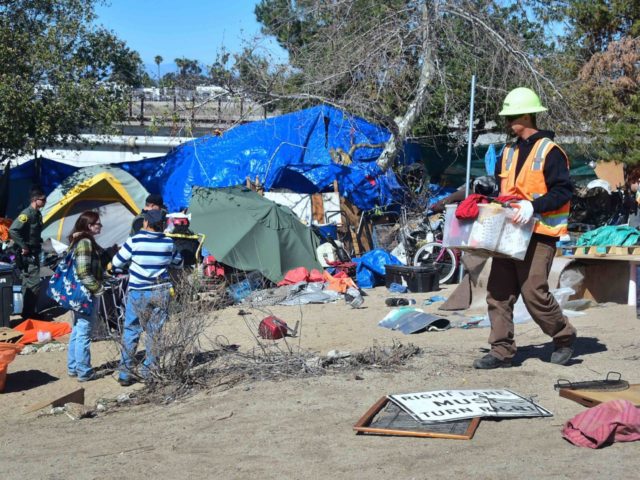Orange County found 13,950 used hypodermic needles left by evicted homeless people along the Santa Ana River, confirming public health concerns that led to the camps’ removal.
It took over a decade of legal battles for the County of Orange to be able to evict about 1,000 campers along the Santa Ana River on Feb. 26. The voluntary resettlement negotiated by U.S. Judge David O. Carter and social justice attorneys representing homeless plaintiffs, who claimed a “civil right” to camp on any non-private property, requires the County to pay for almost 500 motel rooms per night for the former campers.
With the Orange County Sheriffs intensively enforcing trespassing laws along the river, the OC Public Works Department began a three month effort to clean up dozens of camping sites. The County reported that in the first month of the clean-up, sanitation workers removed 5,279 pounds of human waste, 404 tons of trash and 13,950 needles.
County health inspectors determined that the area was so hazardous to human health that a two-mile stretch of the bike trail along the river from Santa Ana to Anaheim will require removal and about three inches of topsoil will need to be burned. The County also intends to use an asphalt slurry to seal and recover all bike paths along the edges of the river.
Social justice advocates and their attorneys have argued that the homeless campers are victims and that the encampments are not a threat to local communities, but health officials have warned that the campers are a ticking time bomb for infectious disease.
Breitbart News has reported on the California hepatitis A outbreak that began in San Diego homeless tent cities and has spread to the statewide general population. The California Department of Public Health’s most recent weekly reporting found an average of 350 new cases and 11 deaths per week.
Other infectious disease outbreaks that began in homeless encampments include new strains of tuberculosis that emerged in Northern California homeless camps; a deadly new strain of Streptococcus that killed three homeless in Anchorage; and a Shigella food borne illness that causes bloody diarrhea, which began in Portland homeless camps.
The American Council on Science and Health (ACSH) warns that homeless camps are especially effective as a breeding ground for antibiotic-resistance infectious diseases that are now responsible for about 23,000 U.S. deaths per year, according to the Centers for Disease Control.
The ACSH warns that homeless camps represent a serious health risk to general populations, because the microbial world thrives in the camps’ squalor.

COMMENTS
Please let us know if you're having issues with commenting.